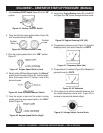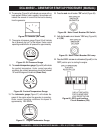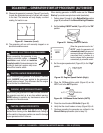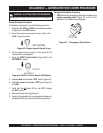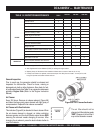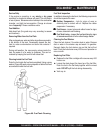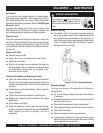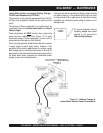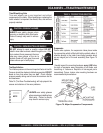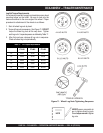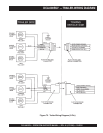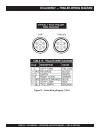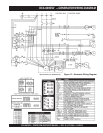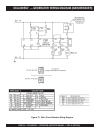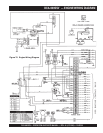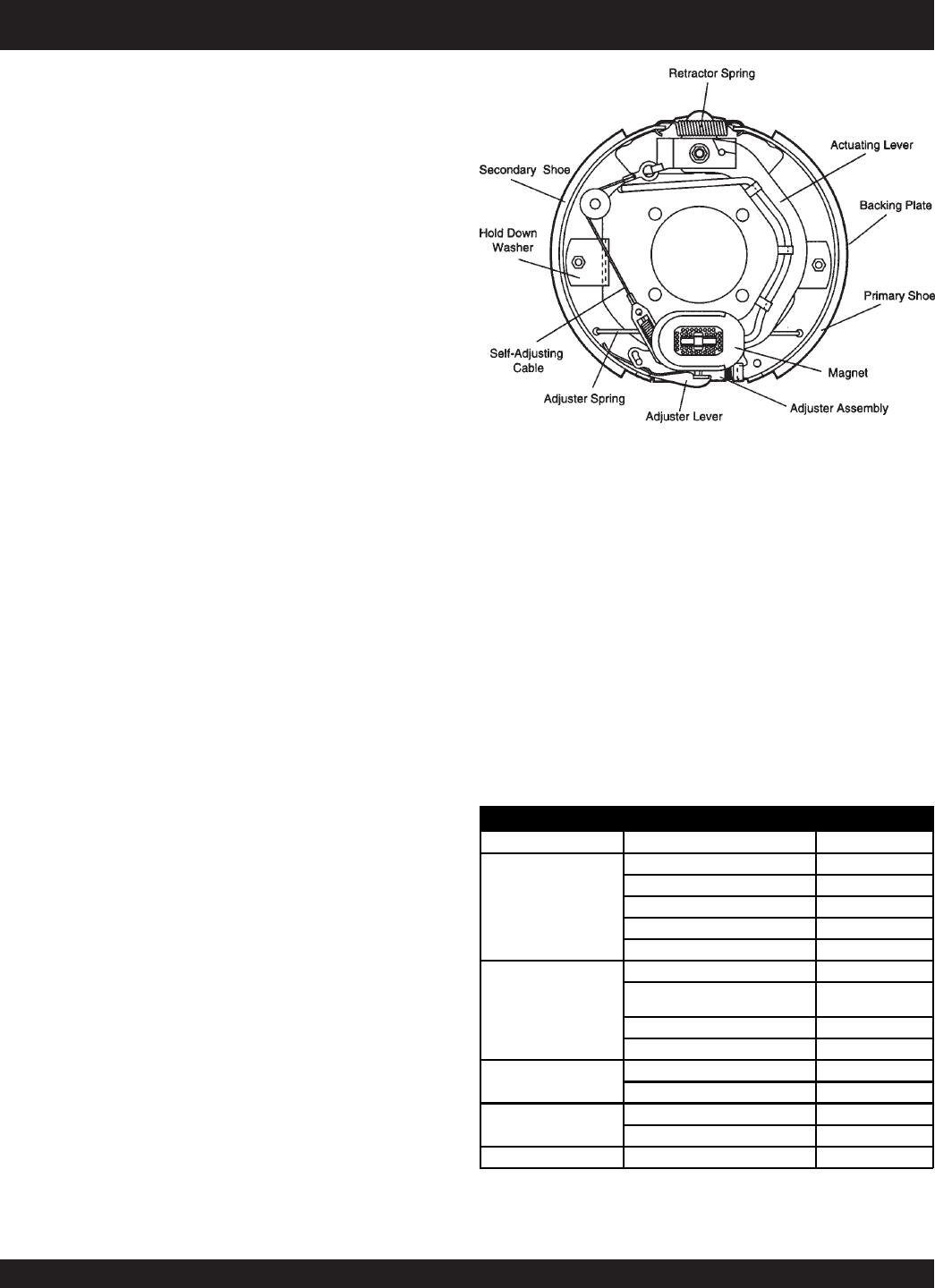
PAGE 48 — DCA-600SSV — OPERATION AND PARTS MANUAL — REV. #0 (07/13/09)
Figure 72. Electric Brake Components
DCA-600SSV —TRAILER BRAKES MAINTENANCE
Brake Drums (or discs), Linings, and Hoses
Brake drums or discs must not have cracks longer than one
half the width of the friction area. Linings must not be loose,
soaked with oil or grease or be dangerously thin. Mechanical
parts must be in place, not broken or missing. Check that
all air hoses connected to the brake chambers are not worn
or cut due to rubbing.
Air Leaks
Always check for brake air leaks before towing the trailer.
NEVER tow the trailer with an brake air leak problem. The
possibility exists of brake failure.
Electric Brakes
Electrically actuated brakes (Figure 72) are similar to
hydraulic brakes. The basic difference is that hydraulic
brakes are actuated by an electromagnet. Listed below are
some of the advantages that electric brakes have over
hydraulic brakes:
Brake system can be manually adjusted to provide the
corrected braking capability for varying road and load
conditions.
Brake system can be modulated to provide more or less
braking force, thus easing the brake load on the towing
vehicle.
Brake system has very little lag time between the time
the vehicle’s brakes are actuated and the trailer’s brakes
are actuated.
Brake system can provide an independent emergency
brake system.
Remember in order to properly synchronize the tow vehicle’s
braking to the trailer’s braking, can only be accomplished by
road testing. Brake lockup, grabbiness or harshness is due
to lack of synchronization between the tow vehicle and the
trailer being towed or under-adjusted brakes.
Before any brake synchronizations adjustments can be
made, the trailer brakes should be burnished-in by applying
the brakes 20-30 times with approximately a 20 m.p.h. de-
crease in speed, e.g. 40 m.p.h. to 20 m.p.h. Allow ample
time for brakes to cool between application. This allows the
brake shoes to slightly be seated into the brake drum sur-
face.
Figure 72. displays the major electric brake components that
will require inspection and maintenance. Please inspect
these components as required. See Table 15. Electric Brake
Troubleshooting.
Magnets For All Electric Brakes
To make certain an electrically-operated braking system will
function properly, you must have your dealer inspect the
magnets at least once a year, or each 12,000 miles. See
the brake manual for wear and current inspection instruc-
tions.
Brake Controller
The electric brake controller is part of the tow vehicle and is
essential in the operation of the electric brakes on the trailer.
The brake controller is not the same as the safety breakaway
brake system that may be equipped on the trailer.
Table 15. Electric Brake Troubleshooting
Symptom Possible Cause Solution
No Brakes or Intermittent
Brakes
Any open circuits or broken wires? Find and correct.
Any short circuits? Find and correct.
Faulty controller? Test and correct.
Any loose connections? Find and repair.
Ground wire secure? Find and secure.
Weak Brakes or Brakes Pull to
One Side
Grease or oil on magnets or linings? Clean or replace.
Connections corroded? Clean and correct cause
of corrosion.
Brake drums scored or grooved? Machine or replace.
Brakes synchronized? Correct.
Locking Brakes Brake components loose, bent or broken? Replace components.
Brake drums out-of-round? Replace.
Noisy Brakes System lubricated? Lubricate.
Brake components correct? Replace and correct.
Dragging Brakes Bearings of the wheel adjusted? Adjust.



